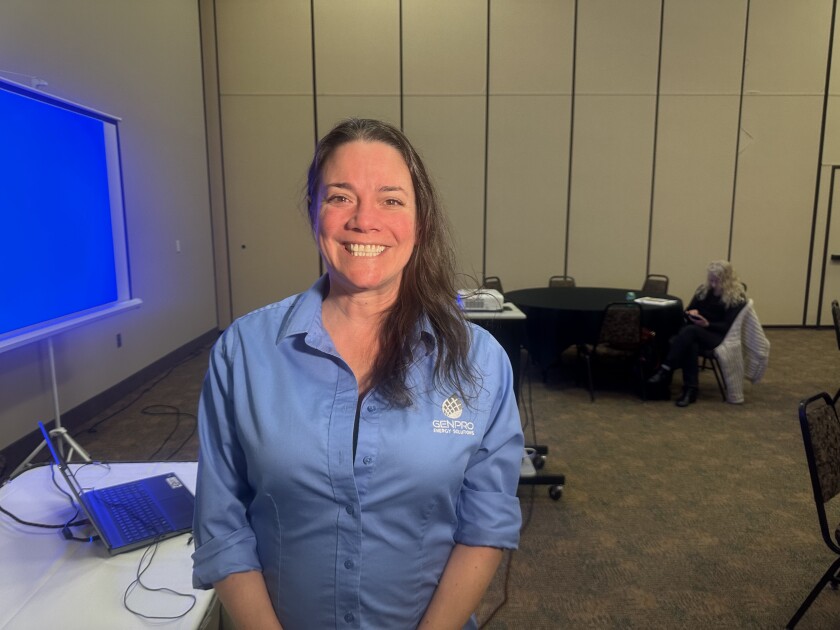OACOMA, S.D. — Solar energy is nothing new, but a new concept called agrivoltaics is on the horizon.
“That’s the coupling of solar energy with agriculture or farming in particular,” said Molly Brown, executive vice president of corporate strategy at GenPro Energy Solutions.
ADVERTISEMENT

GenPro Energy Solutions, based out of Piedmont, South Dakota, currently has a project where solar panels are being
“The developer that we work for actually uses sheep to do grazing and keep vegetation management down,” Brown said.
Other people are looking at growing crops or vegetables under solar structures.
Solar energy systems do take up space, which is why agrivoltaics is on the rise. For a megawatt of energy, it takes around five to seven acres of land.
“So just depending on what you need, you could be looking at quite a bit of acreage, and that’s why they are looking at ways to couple some of the farming with the solar PV system so you are not necessarily taking up usable ag land,” Brown said.
There has been a growing interest in the solar industry, both for agrivoltaics and on traditional farms.
“There has been more and more interest, especially as this idea of Agrivoltaics takes off. There are some challenges in South Dakota just in terms of what you can and can’t do and that we don’t have any state incentives, so there’s not a lot of incentives coming from our state government,” Brown said.
ADVERTISEMENT
But there is funding to help people looking to add solar to their farming operations.
“There is a lot of funding coming with the new Inflation Reduction Act. The USDA has gotten a bunch of funds, the EPA has also gotten a lot of funds, particularly for infrastructure and infrastructure where you can show that there is a carbon offset,” Brown said. “So not only just renewable energy projects but even, you know, a water project that might sustain an operation or a sanitary district, like those types of things are getting quite a bit of money put into them.”
originated as a solar water pumping company and has helped many livestock operations get the water they need.
“That has been used for cattle livestock watering for a very, very long time, you know. Ranches are thousands and thousands of acres, and you can’t bring energy out there, so it’s a way to be able to water cattle,” Brown said. “You can use those same pumping systems on vineyards or any type of farming really for irrigation systems as well.”
There are many benefits to adding solar to your operation, Brown says, but the big one is once it’s installed, you’re not paying for energy.
“You don’t have to pay for electricity, especially with those off-grid types of applications, and it’s really just saving on electricity. Like if you have a dairy farm or a hog barn, those are super electricity intensive operations, so this allows you to cut back on some of that electricity consumption,” Brown said.
Installing solar is an investment, and its cost depends on your operation. Brown said the solar panels are typically under warranty for 30 years.
ADVERTISEMENT
“You can have a water dumping system that’s, you know, $10,000, and then we can have a project that’s millions of dollars because it’s just large scale, so it’s all scalable depending on your energy needs,” Brown said.
Brown recommends becoming educated with solar energy systems before incorporating one on your farm or ranch.
“Become educated and understand what your utility bill looks like and how you are being charged for electricity because a lot of times there are things hidden in rate structures and there’s just things you need to know to better understand how you can either change your consumption, affect your consuming or offset your consumption,” Brown said.









